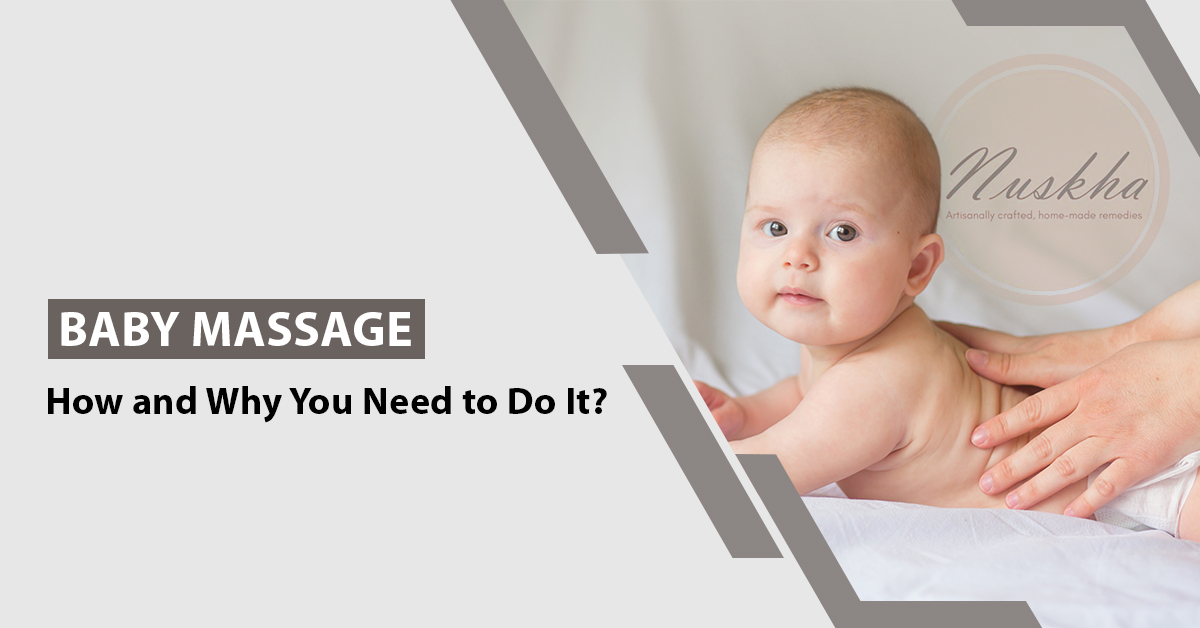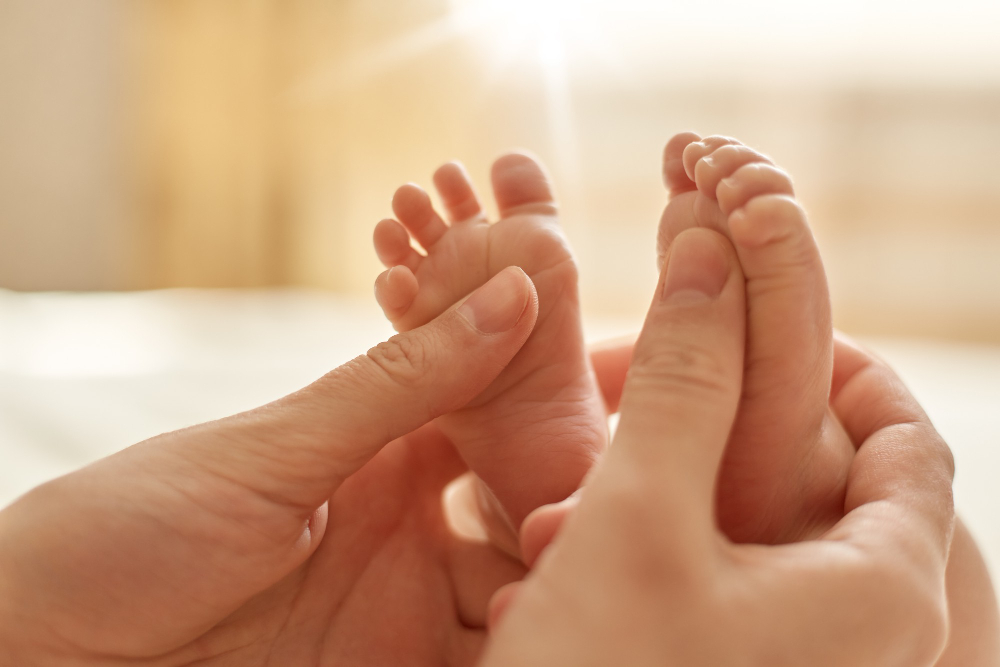
There are many good things about massaging a baby. With each soft touch, your baby will feel cared for and loved, which will make the bond between you and your baby stronger.
Your baby will also feel calmer after a massage, which may help them sleep better. Some research shows that massaging a baby might even help it grow in a healthy way, but more research is needed.
Don't know where to begin? We've put together a handy guide with information about the benefits and how to do it. It has all the information you need to know about Baby massage.
Your baby will stay active for the rest of the day if you give him or her a good, thorough massage once a day, preferably in the morning. It makes the child happy and calm, and it helps him or her sleep better.
Massage is very helpful for babies born with jaundice. Studies have shown that this helps them get better from their illness faster.
Several studies show that massaging the baby helps new mothers get over postpartum depression because it helps them bond with the baby and look into its eyes.
Weight Gain: Babies will gain more weight if you rub oil on them. It helps premature babies who are underweight a lot because it stimulates a key nerve called the vagus nerve. This nerve connects the brain to the stomach and other important organs in the body. It helps babies digest food better, which helps them gain weight.
Better Sleep: All your baby would need to sleep well is a good massage and a hot shower. It also helps the nervous system control the organs and keeps the premature baby's heart rate steady.
No Fuss, No Colic: Massaging the baby helps him or she relax and calm down. At least three or four times a week, holding the baby's knees and gently pushing them into the tummy will help the baby grow out of the colicky stage and become less fussy.
Physical and mental growth: When a mother or other older family member massages a child, it gives them time to themselves and helps them form a strong bond with the child. Interactions, eye-to-eye contact and humming while massaging the baby help grow there physically and mentally.
Here are some ways to massage your baby at home:

In the first few weeks after your baby is born, you can start gently massaging them. It's a great way to spend time with your little one and make both of you feel at ease. Knowing how to massage your baby and when to do it will help you get the most out of this healing practice.
Make the baby comfortable: Plan on giving the massage in a room that is warm and has dim lighting. Since the baby's clothes will be off during the massage, it's important to make sure it's not too cold. Place the baby on there back on a soft towel or blanket on the floor or another safe flat surface.
Use edible oil: If you want to use massage oil, use olive oil, avocado oil, or another oil that can be eaten since the baby might put their fingers in their mouth. Mineral oil and other oils that can't be eaten shouldn't be used because they can hurt your baby's stomach. If the oil is cold, rub it between your hands to warm it up before putting it on your baby.
Use gentle rubbing motions: Do not massage a baby with as much pressure as you would an adult. Rub your baby's body gently with your fingers, but don't push too hard or knead. Instead of working out knots or doing a deep tissue massage, as you would with an adult, you should use light, circular rubbing strokes to stimulate the baby's skin. You should rub the baby's back, stomach, arms, legs, head, and neck. Be gentle with every part of your baby's body.
Try a milking massage: It is a good way to help your baby's arms and legs feel better. With your forefinger and thumb, make a loose circle or C-shape around your baby's arm or leg. Pull down on their foot or hand with a very gentle pulling motion, like you were milking a cow. Several times, do the same thing.
Massage their legs and feet: Put your thumb and first finger around the baby's thigh. Gently stroke their legs from their thighs to their feet, and then use your thumbs to rub their feet. Turn their toes in and out. Repeat with the other leg, and then bend and straighten both knees gently at the same time.
Many people start with the legs and feet to make it easier for the baby to go from playing to being calm. As you massage the baby's legs and feet, it may kick and move around and have fun. Be very careful not to pull on their legs or put too much pressure on their knees.
Massage their tummy and chest: This part of the massage makes you feel the most relaxed. Start by massaging their chest from the middle outward, away from their heart.
Smooth your hand over their skin as if you were smoothing open the pages of a book. Then, use a clockwise motion to rub their stomach. This looks like how digestion works. Do this part of the massage over and over again until your baby seems calm.
Massage their head and face: Make circles with your fingertips on their head and face. Make a smile on their lips and walk your fingers around their forehead and cheeks. Stay away from the eyes and nose because massaging too close to these areas could hurt them.
Massage their backs: Turn your baby over so that he or she is lying on its stomach. Smooth your hands from the middle of their back outward to massage their back. Don't grab their shoulders and knead them like you would with an adult. Instead, rub their shoulders and lower back in circles.
Baby massages are a great way to calm your baby and spend time with him or her. But not all parents are naturally good at massaging. Don't give up if the first time you try massaging your baby doesn't go well.
You and your baby might have to try the massage a few times before you get it right. Every time you do it, you and your baby get closer and love each other more. Even if you can't figure out how to massage a baby at first, keep at it. Your baby will appreciate it